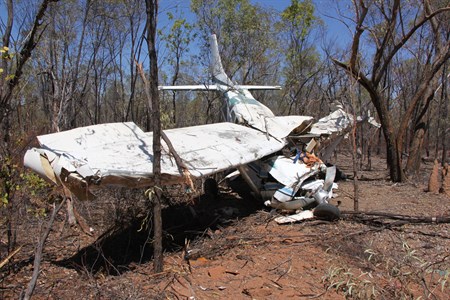What happened
At about 1200 on 15 September 2013, the pilot-owner of a Cessna 206, registered VH-WAV, landed on a public road to repair a truck at a work camp. At about 1516, during take-off from a different, curved road, the aircraft’s left wing struck a tree at a height of about 30 ft. The wingtip and aileron separated before the aircraft impacted terrain, fatally injuring the pilot and passenger. The aircraft was destroyed.
What the ATSB found
The distance available from where the pilot increased power for take-off was much shorter than the distance advised in the aircraft’s pilot operating handbook under the prevailing conditions.
There was no apparent reason for the pilot to attempt a take-off from that location when a more suitable location was nearby. It is most likely that the pilot misjudged the distance available, the prevailing conditions and their effect on the aircraft’s performance, or had a false recollection of the relative layout of the two roads and thought that there was more take-off room available beyond the curve. However, it is also possible that the pilot’s judgement of the available distance, or his decision-making capability, was affected by a serious medical condition and/or prescribed medications that had not been reported to the Civil Aviation Safety Authority (CASA) until after the pilot’s previous medical certificate had expired.
In addition, the ATSB found that the pilot’s seat had broken from its mounts, probably as the result of heavy, unsecured cargo striking it during the accident sequence. This could have had a detrimental effect on the survivability of the accident.
Safety message
The accident highlights the importance of carefully considering all relevant factors that could affect the suitability of a particular landing and take-off area. These include: aircraft weight and engine power; wind direction, speed and gusts; ambient air pressure and temperature; surface slope, material, and condition; other physical characteristics of the area such as its length and width; and the height and location of surrounding obstacles.
Though no link with the accident was established, flying without a valid medical certificate, or omitting to report a diagnosed condition or treatment to a Designated Aviation Medical Examiner or to CASA, can lead to such an impairment being undetected or its effect underestimated.
Unrestrained cargo poses a significant risk to the survivability of aircraft occupants. Pilots should take care to ensure that all cargo is adequately restrained to prevent movement during flight and improve survivability in the event of an accident.



